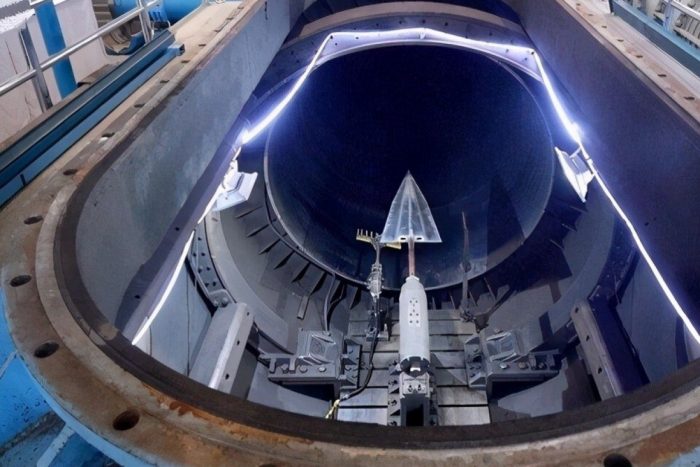China’s ‘Mind-Boggling’ Claims – New AI System Can Design Hypersonic Weapons By Itself Without Human Intervention
ByEurAsian Times Desk
March 25, 2022
Although the US remains the leader in the anti-submarine warfare and artificial intelligence domain, China’s efforts to harness “quality data” for military use have put Beijing way ahead of the Pentagon, a former admiral of the US Navy said.
A new paper published in a journal run by China’s aerospace defense industry claims that Beijing has made significant progress in building an AI (artificial intelligence) system that can design new hypersonic weapons autonomously.
“It was frustrating for all of us working with large excel spreadsheets, in deciding which programs to advance and which to curb”, said Admiral Bill Moran (retired), a former Vice Chief of US Naval Operations, while speaking at a Navy League webinar on artificial intelligence in November 2021.
On March 16, a team of researchers led by Professor Le Jialing with China Aerodynamics Research and Development Centre in Mianyang, Sichuan, published their findings in the Journal of Propulsion Technology.
Le has been an advisor to the Chinese military on hypersonic weapon technology for more than three decades, according to the publicly available information.
As hypersonic research in China advances to Mach 8 – eight times the speed of sound – and above, the volume of experimental data to be processed and analyzed has also been increasing significantly, researchers say.
In such a situation, the human brain can no longer keep up with the rapid pace of hypersonic technology development according to Le and his team.
Countries across the world are racing to achieve hypersonic flight capability and an essential part of this race are simulation experiments that virtually create extreme hypersonic flight conditions in ‘wind tunnels’.
File Image: China’s Hypersonic Wind unnel
How AI Systems Identify ‘Shock Waves’
When a missile or an aerial object approaches speeds exceeding that of sound, it experiences something called a ‘shock wave’, which is basically a disturbance in the air around the vehicle that can cause extremely violent changes in pressure over its surface.So, the scientists use wind tunnels to basically blow wind at high speeds over their vehicle designs to see if their designs can perform desirably under such conditions.
Image of what is believed to be a Chinese hypersonic aircraft. (CCTV screenshot)
Now, there are different types of shock waves that can have differing impacts on the vehicle and it is critical to distinctly identify these shock wave types for designing hypersonic vehicles.
Each wind tunnel experiment can produce about tens and thousands of simulated images of atmospheric disturbances around the vehicle and these photos have to be studied manually by experienced researchers, often pixel by pixel, to identify which disturbance is a shock wave or what type of shock wave it is.
An image of a hypersonic wind tunnel test contains a large amount of turbulence, and it can take human experts “an enormous amount of time and energy to label the critical shock wave structures pixel by pixel”, said Le and colleagues in the paper.
Li’s team claims to have built an AI machine that could identify most of the shock waves occurring in wind tunnel tests without even being instructed on what to look for.
Usually, the AI systems need to be taught by humans in a typical training session which would involve the researchers carefully outlining a shock wave by labeling it with information so that the AI can then go on to identify them itself.
The AI will make mistakes initially so it has to be corrected repeatedly and that is how it will learn to correctly identify a particular shock wave. However, Li claims that his AI system needed no training at all!
The researchers used a technique called ‘unsupervised segmentation’ based on a mathematical theory on graphics that can form a relationship between seemingly unrelated objects.
The machine would label what it believed was a shock wave by examining the location, brightness, and color of each pixel. The AI would use these initial results as training material to continuously improve its performance in recognizing shock waves until it could detect the shock wave patterns.
China’s DF-17 hypersonic missiles. (Image: China Military Online)
Perfect Match
According to the researchers, the shock waves identified by their AI were an 85 percent match to those marked by human experts.Furthermore, the AI system’s overall accuracy was nearly 4 times that of traditional computer software and it was based on a low-cost, 3-year-old graphic card that took about 9 seconds to process an image.
If true, such a remarkable feat can give China an edge not only in designing hypersonic vehicles but also in military applications such as autonomous target detection and recognition for their weapons based on deep learning and deep neural networks.
“Our future cruise missiles will have a very high level of AI and autonomy,” such that commanders will be able “to control them in a real-time manner, or to use a fire-and-forget mode, or even to add more tasks to in-flight missiles,” a senior Chinese missile designer said in 2016.
Last year, PLA missile scientists from Rocket Force Engineering University had said that the accuracy of hypersonic weapons could be improved by more than 10 times if complete control is given to the machine.
They had published a paper detailing how AI can write the weapon’s software “on the fly”, while it moves at hypervelocity, through a unique flight control algorithm.

China’s 'Mind-Boggling' Claims – New AI System Can Design Hypersonic Weapons By Itself Without Human Intervention
Although the US remains the leader in the anti-submarine warfare and artificial intelligence domain, China’s efforts to harness “quality data” for military use have put Beijing way ahead of the Pentagon, a former admiral of the US Navy said. A new paper published in a journal run by China’s...
 eurasiantimes.com
eurasiantimes.com





